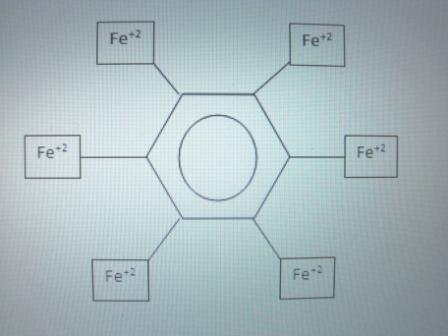Friday’s quiz was a tough one. Bernadette and Lisa B. gave it a good shot, guessing that this might be a phosphorus deficiency. While they’re on the right track (it is a nutritional disorder), the mineral of interest is iron, and it’s a toxicity problem, not a deficiency.
Under wet conditions (the affected Clematis is in the part of our landscape with a perched water table – see the March 15 posting), iron is predominantly in the Fe+2 form (ferrous) rather than the Fe+3 form (ferric). The ferrous form is easily taken up by roots, and when leaves accumulate too much iron they turn reddish-brown. This diagnostic characteristic is called bronzing, and it’s different than the reddening caused by anthocyanin accumulation. (As an aside, nonagricultural landscapes rarely have phosphorus deficiencies and are more likely to contain excessive levels of phosphorus.)
Finally, all this talk of iron has reminded me of one of my favorite chemistry puzzles – see if you can figure out what this is:

Give up? It’s a ferrous wheel!
Oh that’s funny!
Does this have anything to do with the winter bronzing of boxwoods?
Daniel, I think that type of “bronzing” is due to cold-induced dehydration. You’ll see this primarily on the leaves most exposed to the elements, while the iron-induced bronzing can be anywhere.
Once again I must thank you for all of the great info and the fun I have learning it here.THANK YOU
I’ve got your number, Avogadro.
Is there anything one can do to help the plant suffering this toxicity?